"SLC22/WK1: Advanced Electrical Transformers and the Power Factor."
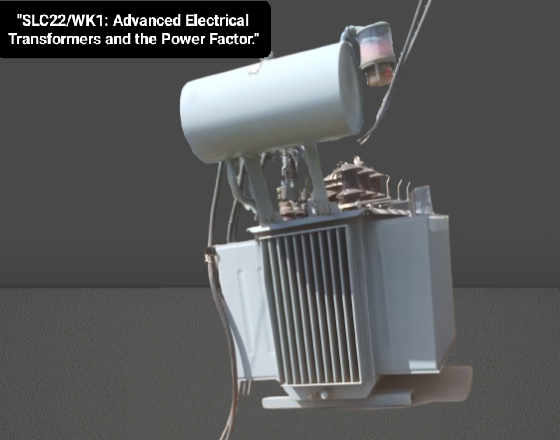
The core distribution of electricity in our homes is the transformer which is what we have discussed here as suggested by professor @mahadisalim
A. Name the two transformers from the diagram and explain why.
Based on the given diagram, in which two transformers are been drawn I can tell you that the names of the two transformers from the diagram are:
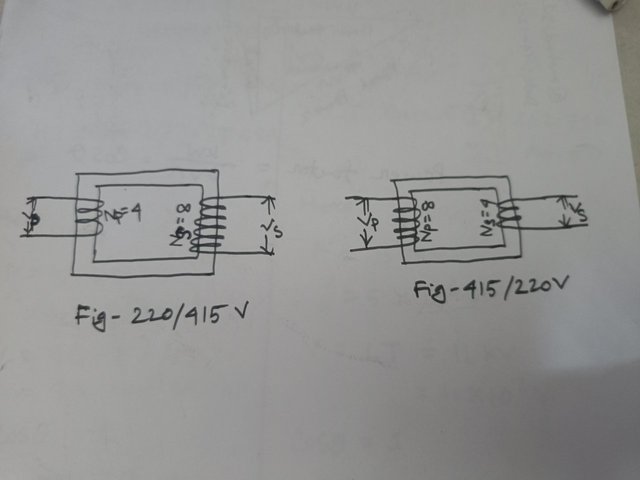 |
|---|
The Right Transformer (415/220 V): it is a transformer that is known as a step-down transformer simply because it is a transformer with secondary voltage
(Vs)that is less than the primary voltage(Vp), which is indicated in the diagram as 415/220 V.The Left Transformer (220/415 V): Is a transformer that is known as a step-up transformer why step-up, it is simply because it is a transformer with secondary voltage
(Vs)that is greater than the primary voltage(Vp), which is indicated in the diagram as 220/415V.
What is the turn ratio of the two transformers?
For we know to determine the turn ratio of the two transformers we will have to apply the formula that is shared below.
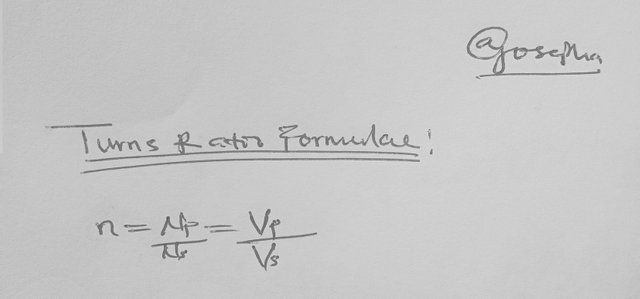
As for the Right transformer (415/220 V):
- Primary turns (Np) = 8
- Secondary turns (Ns) = 4
This simply means the turn ratio is therefore 8/4 = 2:1
As for the Left Transformer (220/415 V):
- Primary turns (Np) = 4
- Secondary (Ns) = 8
This simply means the turn ratio is therefore = 4/8 = 1:2
B. Identify the various parts of a power transformer with a picture and write the function of each part
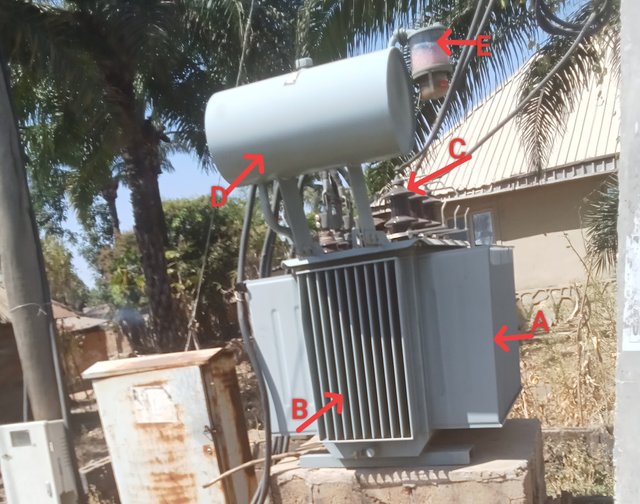
Here I will be identifying the various parts of a power transformer using the picture of the transformer in my place and the function of each part.
A = Transformer Tank:
A is an indication of the transformer tank which is the main body of the transformer that houses the windings, insulating oil, and core. Another function of the transformer tank is to provide mechanical protection and prevent external interference from entering inside.B = Radiator Fins:
B is an indication of the radiator fins, which help in dissipating heat generated within the transformer. If you look at the image you will see oil that is inside the transformer that circulates through these fins. The transformer heats to the outside air to help keep the transformer cool so it won't be too hot.C = High Voltage Bushings:
The function of the high-voltage brushings is to provide insulation and safely allow electrical contractors to pass through the transformer tank (A). The high-voltage brushings are used to connect high-voltage mines to the windings of the transformer.D = Conservator Tank:
The function of this is to allow for expansion, hold extra insulating oil, and contract the oil as it hears or cools down during operation. Also, it makes sure that oil remains in the main tank.E = Breather:
In the breather silica gas, which helps to absorb moisture from the air entering into the transformer tank is contained in it. It keeps the free and dry from contamination, which is very important for the insulation properties of the transformer.
C. What type of transformer is used for your home's electricity? Describe your understanding with pictures.
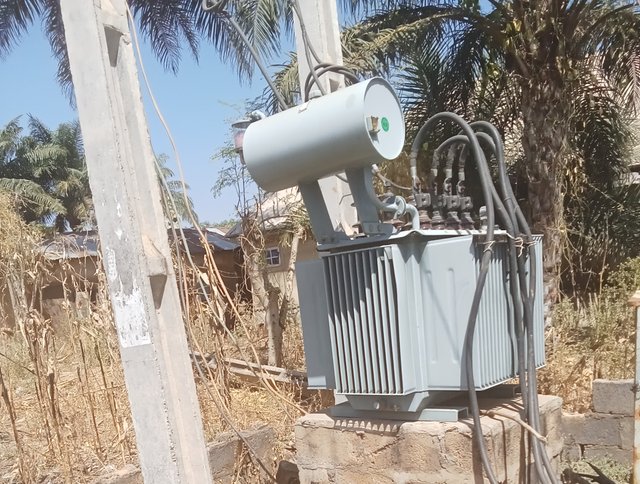
In my home, we are using a distribution transformer which you can see in the provided picture. This transformer is mostly used as a power distribution system to step down high voltage electricity to a lower voltage for efficient and safe use in my area.
The transformer looks smaller compared to most of the transformers in my neighborhood that are mounted on a pole. Also, in the transformer, there is oil cooling. Due to the powerful nature of the transformer, it is been installed outside closer to the residential building along the roadside side to supply electricity at a lower voltage in my area.
D. Calculate how many KVA transformers will be required for a 5000 KW load.
For us to calculate how many KVA transformers will be required for a 5000 KW load we will have to apply the formula to convert kW to kVA below.
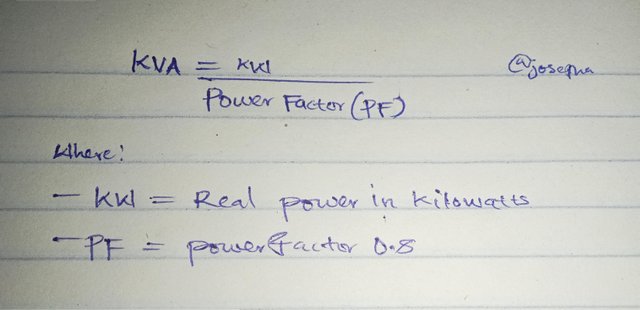
Looking at the formula where our power factor is O.8 which is for the load.
Since we have agreed that the power factor (PF) is 0.8 our calculations would then be
KVA = 5000/0.8
KVA = 6250kVA total load.
Let's assume that the transformer has a rating of 500 kVA the capacity will then be calculated as;
Numbers of transformer 6250/500 = 12.5 transformers.
Since there is nothing like having a half transformer then it simply means we will be having 13 transformers.
E. Look at the transformer's nameplate in the picture and find out the following points.
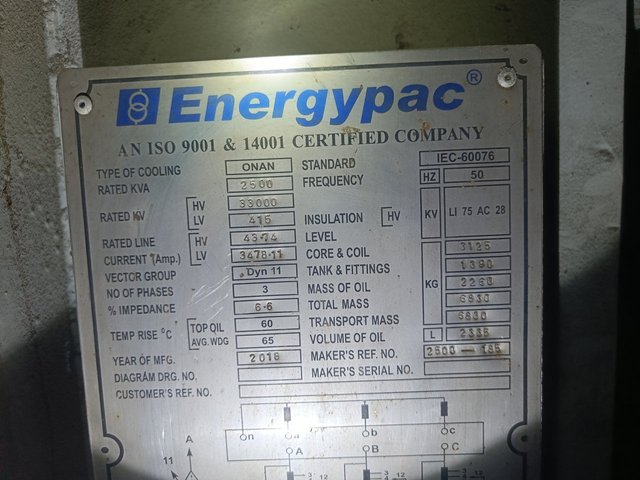 |
|---|
Based on the above picture below are the following points
- Transformer Name: Energypac
- Transformer Rating = 2500 kVA
- Primary Voltage(HV) = 33,000 V
- Secondary Voltage (LV) = 415 V
- Current(HV) = 43.74 A
- Current(LV) = 3478.11 A
F. Find the currents in the high voltage (HV) and low voltage (LV) sides of the 33/0.415 kV, 2.5 MVA transformer.
To calculate the current in the high voltage (HV) and low voltage (LV) side of the 33/0.415 kV, 2.5 MVA transformer I will have to present both the formula and work in a paper which you can see below.
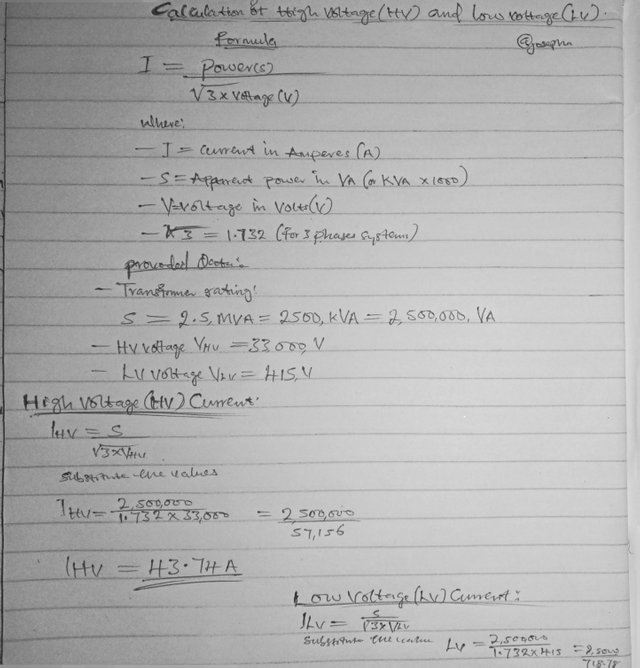
From the above calculation, our final answers are;
- High Volatge (HV) = 43.74 A
- Low Voltage (LV) = 3478.11 A
G. What do you mean by power factor? What is the power factor value given by the electricity supply company in your country?
The measurement of how effective electrical power is being used is what power factor means. It is seen as the ratio of real power that does important work to apparent power supplied to the circuit.
The actual power that is consumed by equipment to perform important work which is measured in kilowatts is known as real power. Apparent power is known as total power that is supplied whereas the power that oscillates between the reactive components and the source is known as reactive power.
In Nigeria my dear beautiful country, DISCOs and PHCN which are the two major electricity supply companies usually use 0.8 to 1 power factor for both commercial and industrial usage.
Given the nameplates of the two transformers shown in the figure, write three differences.
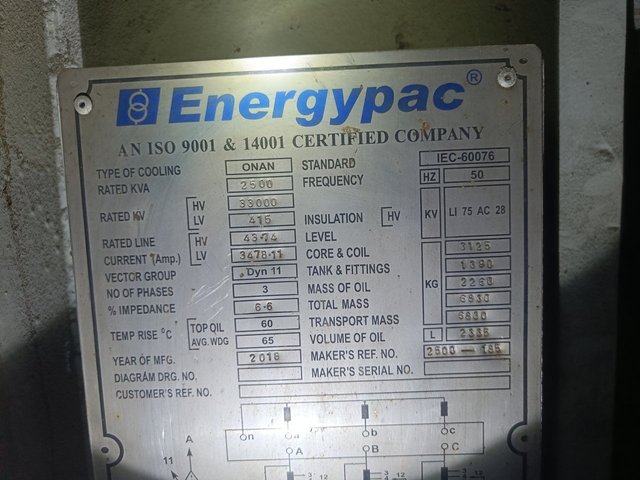 | 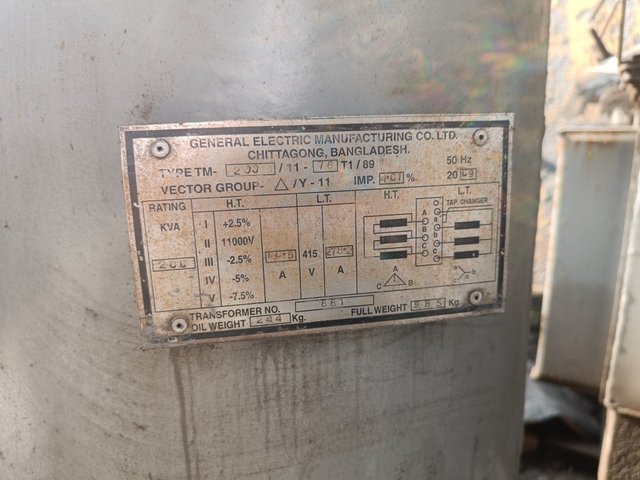 |
|---|
| Prof Mahadisalim |
|---|
Differences
| Point | First Transformer | Second Transformer |
|---|---|---|
| Related Power Capacity (KVA) | 2500 KVA | 200 KVA |
| Volatge Rating | 33,000 V (HV) and 415 V (LV) | 11,000 (H.T) and 415 V (L.T) |
| Vector groups | Dyn 11 | Δ/Y-11 |
Determine True/False:
The name of the oil used in a transformer is pyranol. FALSE
The core loss of the transformer is in the winding. FALSE
The efficiency of the transformer is less than that of other electrical devices. FALSE
The transformer rating is in KW. FALSE
The transformer's insulation test is done with a megger meter. TRUE
I am inviting; @dove11, @simonnwigwe, and @lhorgic